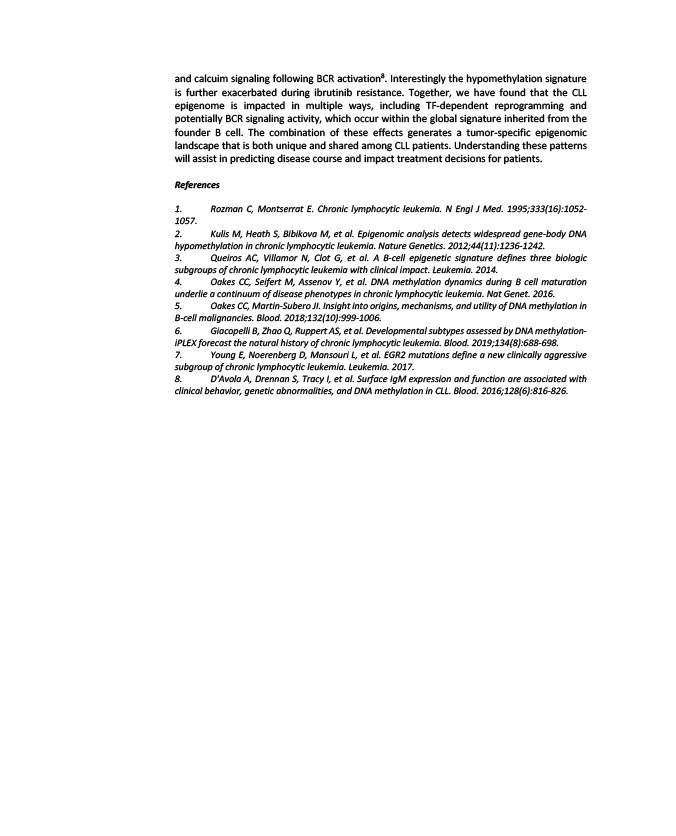
and calcuim signaling following BCR activation8. Interestingly the hypomethylation signature
is further exacerbated during ibrutinib resistance. Together, we have found that the CLL
epigenome is impacted in multiple ways, including TF-dependent reprogramming and
potentially BCR signaling activity, which occur within the global signature inherited from the
founder B cell. The combination of these effects generates a tumor-specific epigenomic
landscape that is both unique and shared among CLL patients. Understanding these patterns
will assist in predicting disease course and impact treatment decisions for patients.
References
1. Rozman C, Montserrat E. Chronic lymphocytic leukemia. N Engl J Med. 1995;333(16):1052-
1057.
2. Kulis M, Heath S, Bibikova M, et al. Epigenomic analysis detects widespread gene-body DNA
hypomethylation in chronic lymphocytic leukemia. Nature Genetics. 2012;44(11):1236-1242.
3. Queiros AC, Villamor N, Clot G, et al. A B-cell epigenetic signature defines three biologic
subgroups of chronic lymphocytic leukemia with clinical impact. Leukemia. 2014.
4. Oakes CC, Seifert M, Assenov Y, et al. DNA methylation dynamics during B cell maturation
underlie a continuum of disease phenotypes in chronic lymphocytic leukemia. Nat Genet. 2016.
5. Oakes CC, Martin-Subero JI. Insight into origins, mechanisms, and utility of DNA methylation in
B-cell malignancies. Blood. 2018;132(10):999-1006.
6. Giacopelli B, Zhao Q, Ruppert AS, et al. Developmental subtypes assessed by DNA methylation-iPLEX
forecast the natural history of chronic lymphocytic leukemia. Blood. 2019;134(8):688-698.
7. Young E, Noerenberg D, Mansouri L, et al. EGR2 mutations define a new clinically aggressive
subgroup of chronic lymphocytic leukemia. Leukemia. 2017.
8. D'Avola A, Drennan S, Tracy I, et al. Surface IgM expression and function are associated with
clinical behavior, genetic abnormalities, and DNA methylation in CLL. Blood. 2016;128(6):816-826.